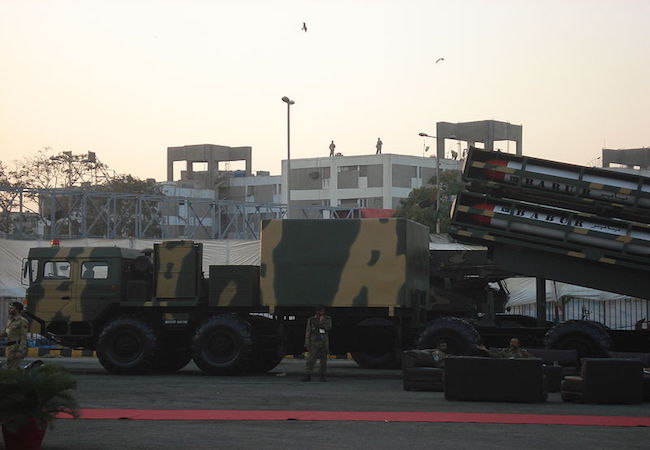
By Maimuna Ashraf
Pakistan lately expressed concern over the latest Indian test of a submarine capable of firing nuclear ballistic missiles, saying the “act will impact the delicate strategic balance in the region”. The test of the nuclear-propelled submarine has been stated as “serious development” resulting into “nuclearization of Indian Ocean”. In general the event is taken as worrisome development for the region and the international community. Pakistan also showed concern that the ballistic missile test conducted by the submarine was not notified to Pakistan, notwithstanding the agreement on pre-notification of test launch of ballistic missiles. In line with the agreement the test should have been notified to Pakistan as any test of missiles, whether launched on the surface or sea, can be mistaken by the other country as an offensive act.
In a world with economic and military development, as viable cooperation’s coming up, oceans are having a significant role in strategy and tactical maneuvers. The economic worth of Indian Ocean was highlighted through the exploration of oil by the Gulf States, however later the trade interests multiplied the significance and security challenges in the region. The Indian Ocean has now become a place of trilateral security competition among China, India, and Pakistan. The bilateral contention between China and India as well as India and Pakistan are intensifying the nuclear activities in the ocean.
The evolving naval nuclear dynamics in South Asia would start a new competition in the region with alarming future prospects. Both states are said to be developing their naval nuclear forces. India, the world’s largest weapon importer, has already approved $16 billion for nuclear powered submarines and naval warships. Reportedly, India plans for developing more than 160 ship navy, 3 aircraft carriers and more than 40 warships and submarines that includes anti-submarines corvettes and stealth destroyers. India is one of the three Asian countries to maintain aircraft carriers. On other hand Pakistan has lately approved a proposal to purchase eight diesel-electric submarines. However viewing India’s naval ambitions, Pakistan will look to neutralize developments with India and it may prove an initiative for having permanent sea-based deterrent equipped with submarine launched variant of cruise missile (Hatf-7- Babur).
According to a 2013 policy brief on Pakistan’s nuclear weapons program, Pakistan already indicated in 2005, when the missile was first tested, that the system was designed to deploy in submarines. The Hatf-7 is a medium-range subsonic cruise missile with a reported range of 700km (430mi). However the Western experts are divided over whether Pakistan has the ability to shrink warheads enough for use with tactical or sea-launched weapons. Jeffrey Lewis, a nuclear and nonproliferation scholar is skeptical over the development and stated “They may have done so, but I can’t imagine it’s very reliable.” A while back, the report “Murky Waters: Naval Nuclear Dynamics in the Indian Ocean” by Iskander Rehman highlighted few interesting and important points. It discusses in detail that the pursuit of sea-based nuclear strike force is the next step towards India’s quest for an assured retaliatory capability and Pakistan’s naval nuclear ambitions are fueled primarily with growing conventional asymmetry rather than strategic imbalance between both countries. Nonetheless, an imperative issue is missing in debate that what a new command and control model will be adopted by Indian strategic forces and what challenges it would pose to the security of region.
Evidently, the pursuit of sea-based nuclear strike force is the next step towards India’s quest for an assured retaliatory capability and Pakistan’s naval nuclear ambitions are fueled primarily with growing conventional asymmetry rather than strategic imbalance between both countries. Nonetheless, an imperative issue is missing in debate that what a new command and control model will be adopted by Indian strategic forces and what challenges it would pose to the security of region. However evidently, these two recent developments in South Asia affect three foremost components of strategic stability that includes deterrence stability, arms-race stability and crisis stability. The recent trends show that India is shaping the regional security domains and Pakistan is bound to react accordingly. Nonetheless, India’s conventional superiority and nuclear advancements strongly influence Pakistan’s threat perceptions and nuclear strategies, resultantly boosting the region’s nuclear naval developments. This recent revelation will critically hoist the danger of accelerated nuclear naval developments in South Asia.




